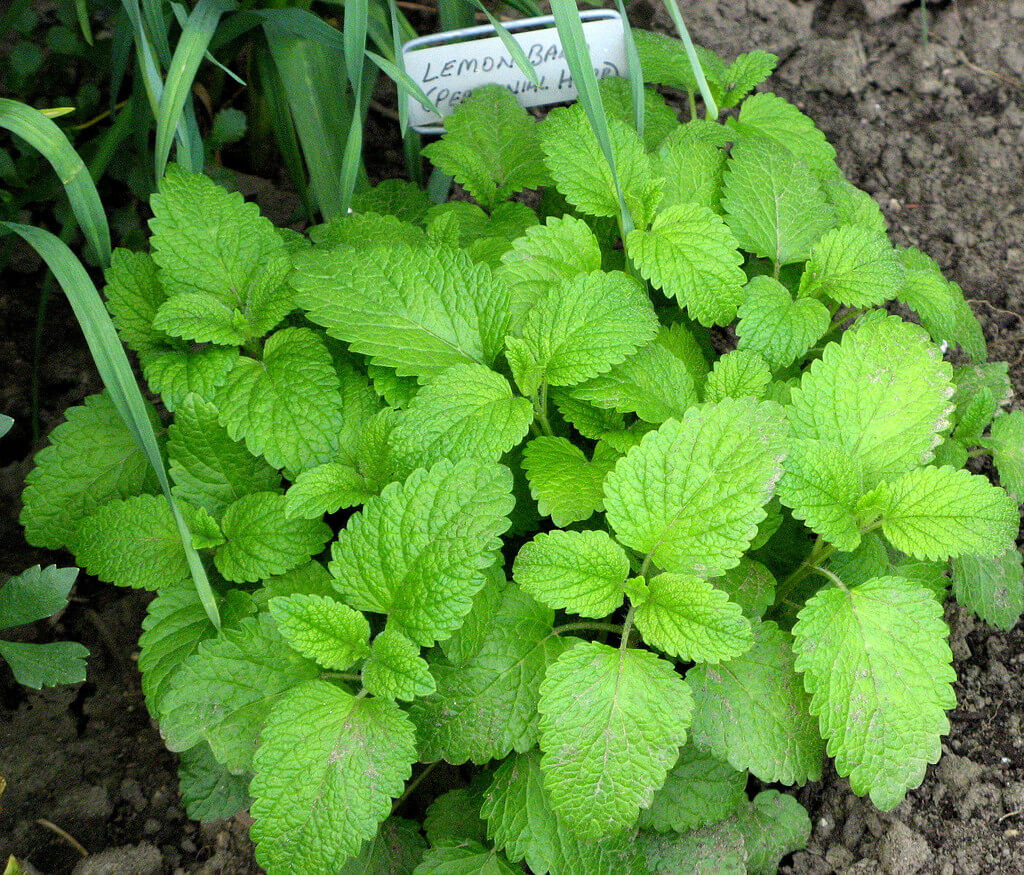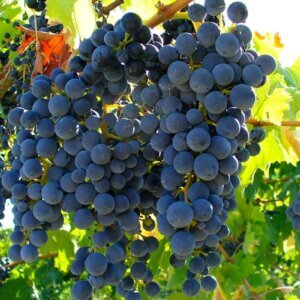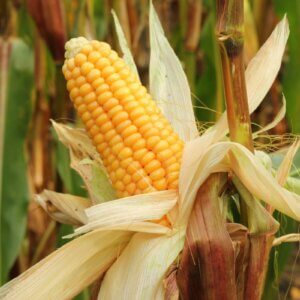The little, red squirrel was determined, I’ll say that much. He, I assume it was a he because he couldn’t take a hint and go away, kept jumping on the patio door window and trying to climb inside. He wanted to join me while I watched the evening news. I don’t know why; there was nothing of interest on the news. Never is.
It was annoying, though. It didn’t seem to matter how many times his head banged against the window, he kept trying again and again. Finally, I told my dog, “Get.” The barking scared him away. Until the next time, the next day, again during the news. And the next day and the next. I had to do something.
My little piece of country paradise is a shared paradise. One where animals, big and small, roam free, sometimes annoyingly so. I didn’t want to be labeled the neighborhood animal hater and start killing off the little critters, but I also didn’t want to endure the nightly routine of the red squirrel banging his head on the patio door window.
Mint As Natural Squirrel Repellent
I did some research. I discovered that growing fresh peppermint detracted the squirrels. Worth a try. I had all kinds of mint elsewhere in my gardens, including spearmint and chocolate mint. Why not put some in a pot on the patio by the window? It was a resilient plant that would grow anywhere. And it smelled so good. At least I thought so, even if the squirrel didn’t.
Which he didn’t! I found that out very quickly the night after I placed my peppermint pots on the deck by the window. The squirrel came back. He made a dash for the window and then quickly swirled away. For the next ten minutes, he ran around in circles on the deck, presumably trying to initiate his nightly attack on my window. He didn’t get very close.
The peppermint was repelling him. I was amazed. And I made a quick decision to plant lots of mint … everywhere. The more natural repellents in my garden, the less likely there would be squirrel destruction. And I would have lots of mint to harvest for my oils and baking.
I used to think there was only peppermint in the mint family. That is until I visited a wonderful nursery called The Herb Garden. It was a place dedicated to nurturing all kinds and varieties of every herb available. It’s where I found mint heaven with a wide selection of mints for my garden. The ones that instantly attracted me were the chocolate mint and the apple mint. My love for chocolate and apples, not together, of course, drew me to these plants.
A Bit About The Mint Family
Lamiaceae or Labiatae is the botanical name for mint. Or more specifically, a family of flowering plants we commonly refer to as mint. Another name attached to this family is deadnettle. The plant is known for its aroma. And surprisingly, the mint family includes such a wide diverse assortment of culinary herbs like basil, rosemary, sage, oregano, thyme, and lavender, to name some of the more recognizable herbs.
There are more – lots more. In fact, there are more than 7500 varieties of Lamiaceae (mint). Some are grown as trees or shrubs, others are edible, and some are merely ornamental.
The most commonly known species of Lamiaceae is the selection that we call mint: peppermint, spearmint, chocolate mint, lemon mint, and so on. Since this is a very easy-to-grow herb, mint of any variety is a common addition to herb gardens.
However, beware, mint can also be very invasive and take over the entire garden. Never mind that. It smells good. In fact, my most prolific mint garden surrounds my compost – a good way to mask the smell of rotting, decomposing food.
So, how many types of mint do you know? How many types do you have in your garden? I have to admit I only grow five: peppermint, spearmint, lemon mint, chocolate mint, and lavender mint. But here’s a good healthy list of mint varieties that will benefit your garden and your harvest.
Peppermint
Mentha piperita, or in its wild form Mentha balsamea, is a hybrid, a cross between watermint and spearmint. Like all mints, peppermint is very invasive. It doesn’t multiply by seeds, as it doesn’t produce any, but rather, by runners that spread out in every direction. Originally from Europe and the Middle East, this mint is grown in many regions around the world, and it’s also commonly found in the wild.
It’s known to grow as high as 3 feet tall and prefers a moist, marginally shady area for growing. The dark green leaves exhibit reddish veins and along with the stems, are slightly fuzzy. The purple flowers whirl around the stem in thick, blunt spikes.
Both the leaves and the flowers are used, though the wild form is not as suitable for eating. Peppermint is popular as a garnish to sweet desserts, added to puddings, salads, and salad dressings. It may be added to sweet or savory dishes, fresh or dried.
Brewed in a tea, peppermint also makes a good curative for stomach ailments like nausea. Also in tea, peppermint has a calming influence and is often used to help a person relax and go to sleep. Fresh peppermint infused (soaked) in honey keeps well for a tasty additive to winter teas, hot chocolate (mint of any variety goes well with chocolate) and in sweet treats. It makes a tasty addition to cold drinks as well, like lemonade, iced tea, and cocktails.
Peppermint can rejuvenate externally as well. Its cool feeling when placed on the skin helps rejuvenate tired, achy feet. Peppermint is useful around the house, inside and out. Mice, chipmunks, and squirrels don’t like the smell of peppermint. Soaking cotton balls in peppermint essential oil and placing these balls in cabinets and holes where rodents might sneak in, discourages their infestation.
Growing peppermint close to the house discourages these rodents from coming too close, as I found out with the annoying red squirrel. Since it contains some antiviral and anti-fungal qualities, peppermint is an ideal additive to cleaning products.
Peppermint has a sweet, attractive odor. Just smelling the herb makes one feel clean and fresh. Chewing peppermint can be medicinal as well as freshen one’s breath. In fact, before chewing gum was invented, people used to chew on peppermint leaves.
Spearmint
Mentha spicata or Mentha viridis is a variety of mint with many names. Spearmint is also known as garden mint, common mint, lamb mint (it tastes delicious as a jelly to accompany lamb or sprinkled fresh on the lamb as it roasts), and mackerel mint. The plant grows tall, sometimes up to 3 feet, with long, narrow leaves and pink or white flowers that grow in slender spikes.
The name ‘spear’ in spearmint addresses the pointy leaf tips that look like a spear. Like most mints, spearmint is invasive with its runners that spread out in every direction. Growing spearmint in a pot is the best way to control its invasive nature.
The leaves may be used fresh, dried or frozen, but it’s best to harvest the leaves before the plant flowers, as the leaves will then lose their flavor and aroma. The leaves are also good preserved in salt, sugar, a sugary syrup, alcohol, or oil. Spearmint is a popular flavoring for toothpaste and various confections. It’s particularly popular in mixed drinks, sweet tea, and iced teas. It can sometimes be found in shampoos and soaps. As a fumigant, spearmint makes an effective insecticide against moths.
Lemon Balm
It is an excellent additive to salads, teas, wines, and liquors, and it’s particularly popular as a flavoring to seafood and meat dishes. It’s also used as a flavoring in desserts. Medicinally, lemon mint tea can be used to treat colds, coughs, fevers and various respiratory ailments. Since lemon balm contains citronellal, it makes an excellent insect repellent, especially for fleas and mites.
Chocolate Mint
Its name says it all. With slightly brown stems and brown markings on the leaves, this mint smells and tastes slightly chocolatey. Imagine a garden plot that smells like your favorite chocolate-mint patty! And it’s perhaps the best mint to complement chocolate in baking for the ever-so-tasty chocolate mint flavor.
Chocolate mint prefers a cool, shady location with moist soil. It likes the sun but not the extreme heat. Once you find the perfect location, it’s an easy-care mint. Just keep it well watered and the chocolate mint will prosper for years. And spread like a weed!

Like many of the other mints, chocolate mint makes a delicious tea. Fill a mug about half full of fresh chocolate mint leaves and cover with boiling water. Steep and spoon out the leaves. Add a little chocolate milk or chocolate almond milk for a thicker, richer treat.
Chocolate mint may also be added to puddings and baked goods for a chocolate mint delight. It can even be added to whipped cream and blended in an ice cream maker to create a chocolate-mint ice cream without adding chocolate. Definitely my favorite mint!
Lavender Mint
Mentha piperita Lavendula, like all the mints, is very hardy, versatile and invasive. With its delicate purple flowers, lavender mint is a pretty addition to any garden. It’s a useful and beneficial mint, both for its medicinal qualities and for culinary purposes.
Best known for its use (dried) in teas and potpourris, lavender mint is also found in shampoos, creams, and even lip balms. A sprig of fresh lavender mint will enhance the flavor of savory dishes like salads, pasta, and soups.
Some people enjoy fresh lavender mint added to a glass of cold lemonade or surprisingly, with a dish of fresh strawberries. Though I have to admit, the idea of adding anything to fresh strawberries doesn’t appeal. Strawberries, I believe, are best eaten just as they are.
Ginger Mint
This mint, also known as slender mint or scotch mint, is a cross between corn mint and spearmint, though it smells very much like spearmint. Like all the mints, ginger mint is easy to grow and will actually do well in any type of soil, including a heavy clay, just so long as it’s well watered.
Ginger mint makes a tasty addition to melon salads, hot or cold teas, and lemonade. Add freshly chopped or dried to butter for a tasty spread. It also makes a nice marinade for meat and poultry.
Banana Mint
Mentha arvensis is a hardy mint with pale, lilac-colored flowers that makes an attractive addition to any herb garden or as a border for a floral garden. It can grow to about 1 foot and prefers a sunny location. The bright lime-green leaves have a heavy mint scent.
When eaten, it leaves an aftertaste similar to that of a banana, hence the name. Bees and butterflies love this mint. Banana mint leaves may be used as a garnish for puddings and summer drinks as well as, sparingly, in salads.
Corsican Mint
Mentha requienii, or Corsican mint, native to Corsica, is a low-growing variety of mint. It’s considered to be one of the smallest members of the mint family. Its bright green leaves, small and oval in shape, emit a strong minty smell when trampled. The mauve flowers are tiny but attract insects, which help pollinate the plant. Like all mints, Corsican mint is very invasive.
Corsican mint is a popular bedding plant, and since it can be trampled without killing the plant, it’s often grown between stepping stones and lining walkways. It likes the shade, but it doesn’t like too much water, as it will make the plant rot.
It makes a good companion plant for broccoli, cabbage, and cauliflower as it repels some of the insects that destroy these crops. Corsican mint also enhances the flavor of vegetable crops nearby.
The most famous use of this mint is as a flavoring for crème de menthe. It has medicinal properties as well. It makes a good antiseptic, and it can relieve flatulence and reduce fever. It also makes a good rodent deterrent as rats and mice dislike the smell of this mint.
Egyptian Mint
Mentha niliaca, or Egyptian mint, is one of the many mints argued to be the actual mint of the Bible. It’s interesting to note that, in Biblical times, mint was tithed, a clear indication of the value of this herb to the Pharisees.
And its value? Well, the aroma, of course, and the sweet taste it provides when added to various dishes. Egyptian mint has a flavor very much like apple mint. However, Egyptian mint, very much a wild mint, is a robust plant with sturdy stems and large gray leaves with a velvet texture. It grows up to 3 feet tall and boasts purple flowers. It grows well in full and partial sun, and it’s known to attract butterflies.
Apple Mint
Mentha suaveolens, also known as apple mint, pineapple mint, woolly mint, or round-leafed mint, is native to the Mediterranean region of western Europe. This is a large plant. It can grow up to 3 feet tall. Like all mints, it spreads, this one spreading by runners.
The light green leaves, slightly wrinkled, are somewhat hairy on top. The pink or white flowers grow in whorls on long spikes. This is an attractive plant and is often used for ornamental flower gardens. Like most mints, it’s hardy and easy to grow, to the point of being invasive. It prefers full sun.
This aromatic plant has a flavor that is both minty and fruity. Among many other culinary uses, the leaves of apple mint are used to make apple mint jelly and apple mint couscous. It makes a delicious fruity flavored mint tea, and it’s often used as a garnish or in salads.
Pennyroyal
Mentha pulegium, best known as pennyroyal or pennyrile, is also known as squaw mint, mosquito plant, and pudding grass. The leaves, when crushed, smell very much like spearmint. Pennyroyal is an old herb used for folk remedies as far back as the Greeks and Romans.
The Latin name is derived from pulex (flea), describing one of its most basic folk remedies: to drive away fleas. The Greeks and Romans also used Pennyroyal as a cooking herb, usually in combination with other herbs like oregano and coriander. Although popular in ancient cooking, pennyroyal has lost its lure in contemporary recipes.
Medicinally, pennyroyal had many uses in ancient times, taking particular note of its toxic abilities to expel: including a method of aborting a dead fetus as well as a method of eradicating pests. and in some areas, rattlesnakes.
There are more positive attributes to this herb. Pennyroyal can assist in various gastrointestinal ailments like constipation and hemorrhoids. It’s also good for skin conditions and toothaches.
Contemporary use of pennyroyal is minimal, although its oil is still commercially available, probably due to the uncertain toxic attributes of this herb and that in unknown quantities, it can be unsafe to use. In fact, recent history records multiple cases of deaths caused by pennyroyal poisoning.
Editor Note: It’s important to note that this particular case involved an individual that ingested a large amount of pennyroyal oil, rather than the leaves of the plant.
There are many more varieties. More types of mints, hybrids, and wild-growing mints, all with their own unique aroma and use, be it edible, medicinal or merely ornamental. But of my few favorites, the most versatile, sturdy and interesting mint, in my opinion, is the chocolate mint. It will always be my all-time favorite.















































I’d heard of some of these mints, but certainly not all of them! A fascinating list to dream garden dreams with.
I love harvesting pennyroyal tea! It grows so freely in our corner of the Ozarks–I always seem to find it with my feet before I find it with my eyes (it smells amazing when stepped on). I wanted to add a note on the “pennyroyal poisoning” link, though. The women who died are taking large amounts of hyper-concentrated pennyroyal oil (a bad move to begin with)…the amount of pulgone in a delicious cup of pennyroyal tea is absolutely negligible in comparison. No need to fear your evening cuppa!
Apparently, It’s a good natural insect repellent, too. I’ve read that you can rub your hands over the herbs in the field, then rub the oil on the back of your neck to help deter mosquitoes.
Thanks for your comment, Michelle! I added some information about pennyroyal oil specfically.
Leigha
Thanks for sharing, Michelle. Some good minty tips.
I believe what you have labeled “lemon mint” is Lemon balm, Melissa officinalis. I have a lot of it, and it smells wonderful and lemony and a bit like Ivory Soap. I also have orange mint, aka bergamot mint, which looks (and smells) distinctly different. More like Earl Grey tea or perfume (hence “bergamot”).
Yes, you’re totally right. Thank you for the correction! Lemon balm is one of my favorites too!
Leigha
bergamot is what is used in Earl Grey tea.
The bergamot mint referred to above is also called bee balm or monarda, among other things. It’s different from the bergamot orange that is the flavoring for Earl Grey Tea. The mint is sometimes called bergamot because it has a similar smell/taste to the orange.
Nice Article ! Very instructive